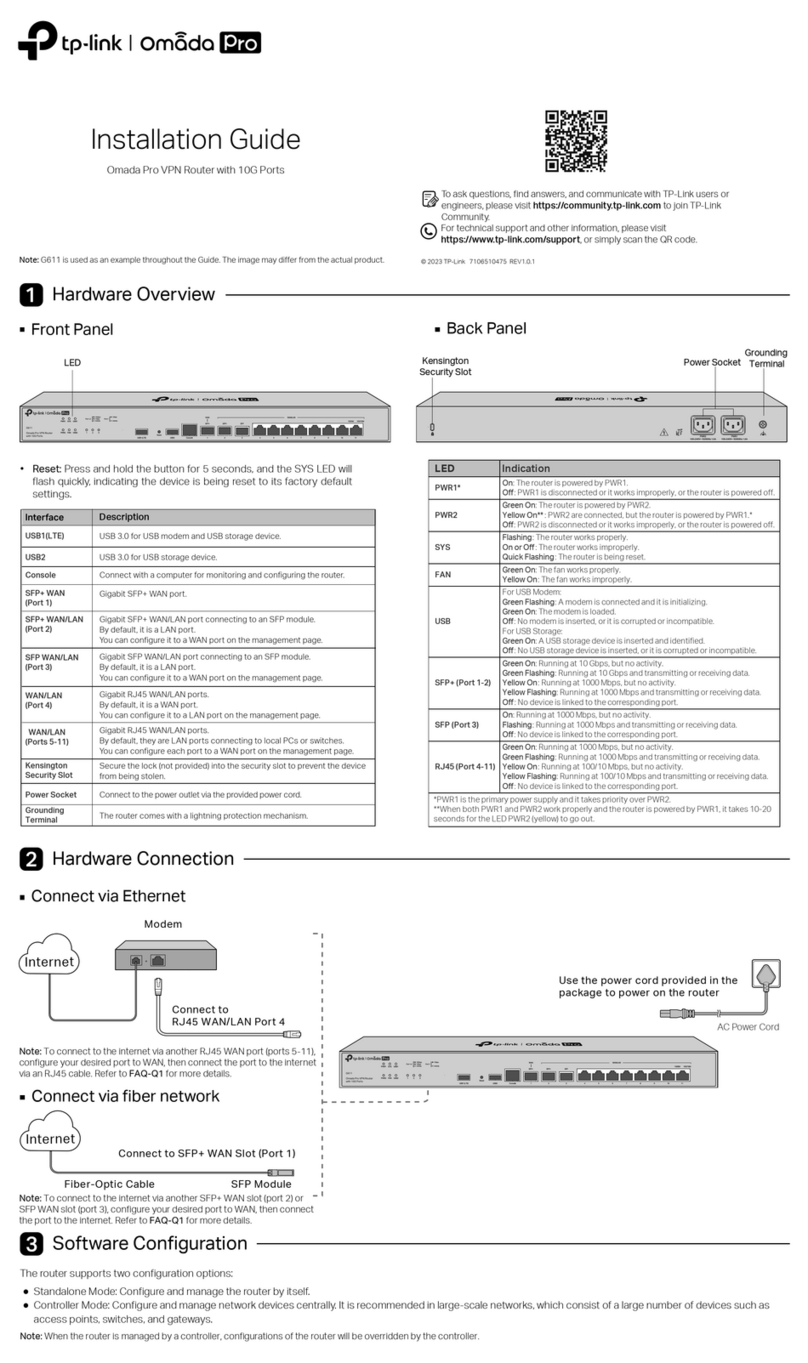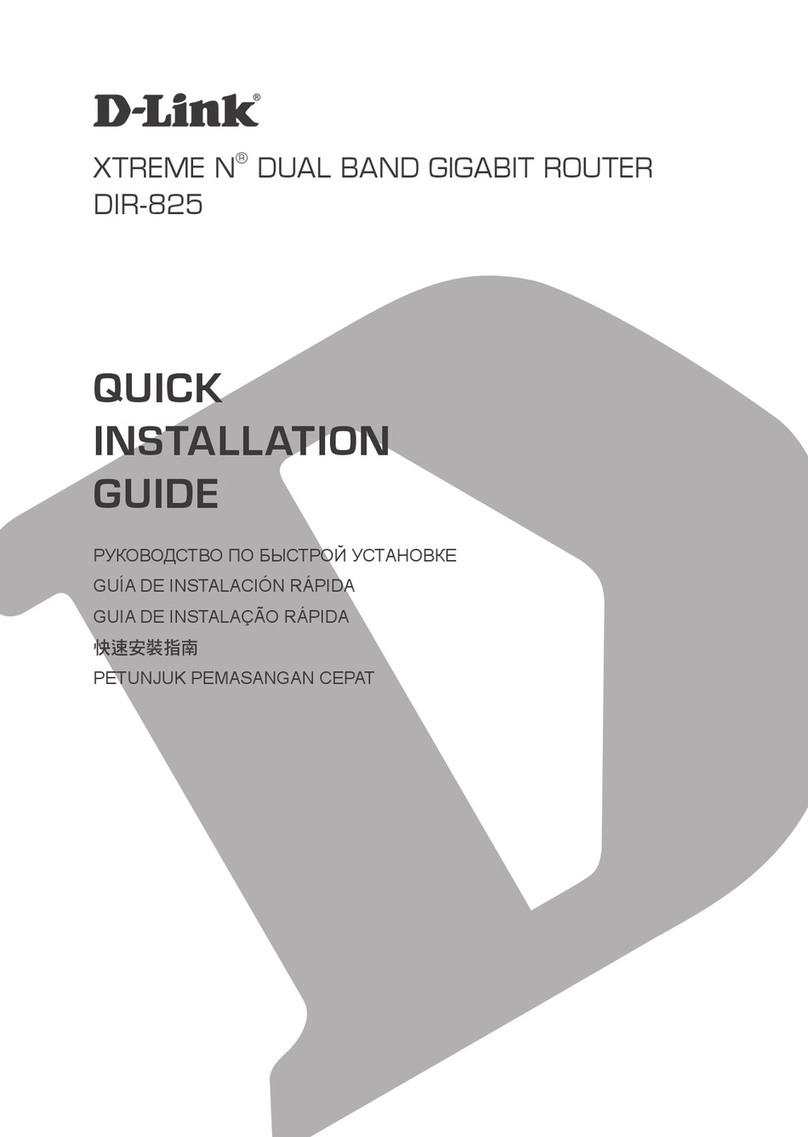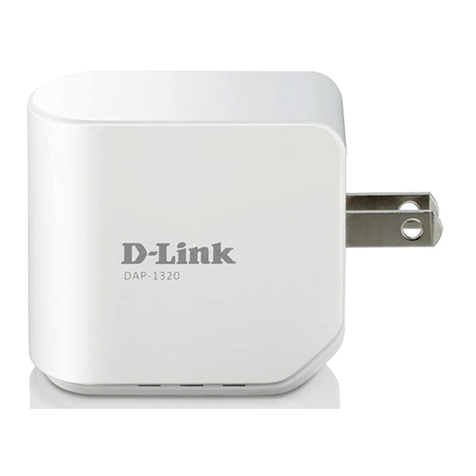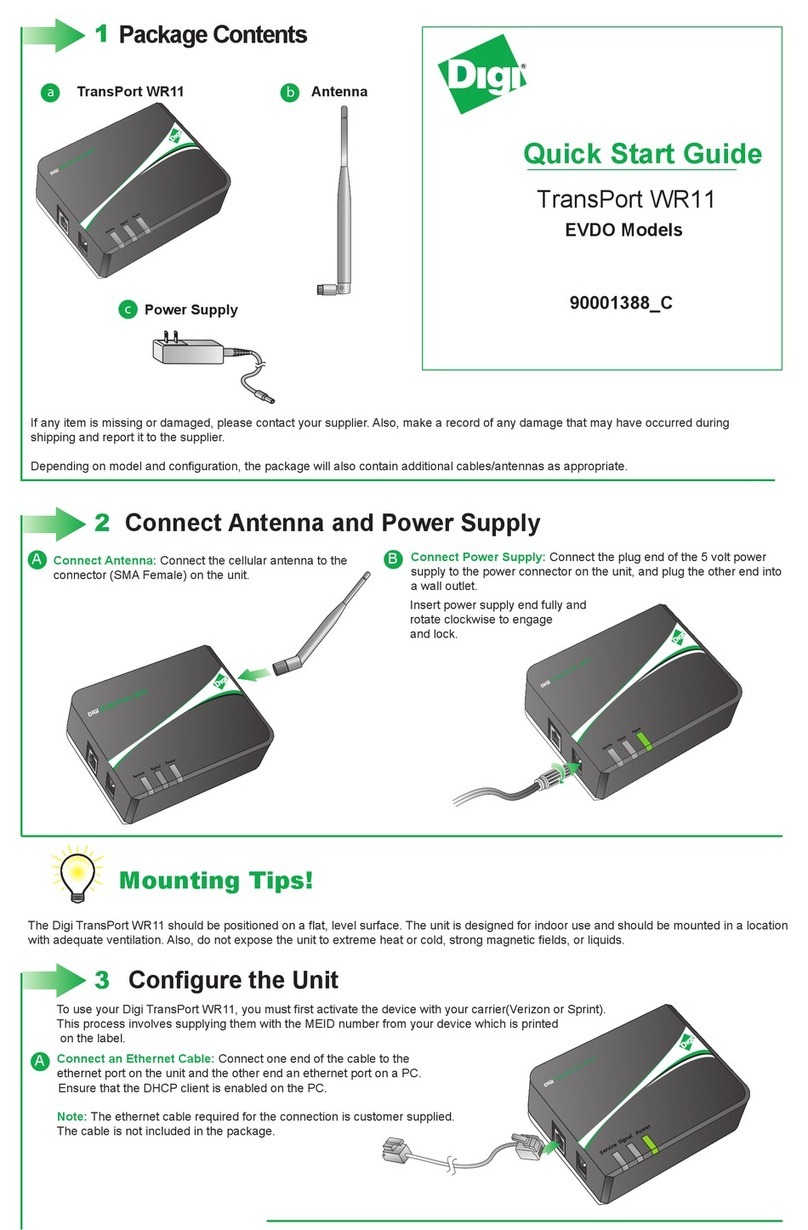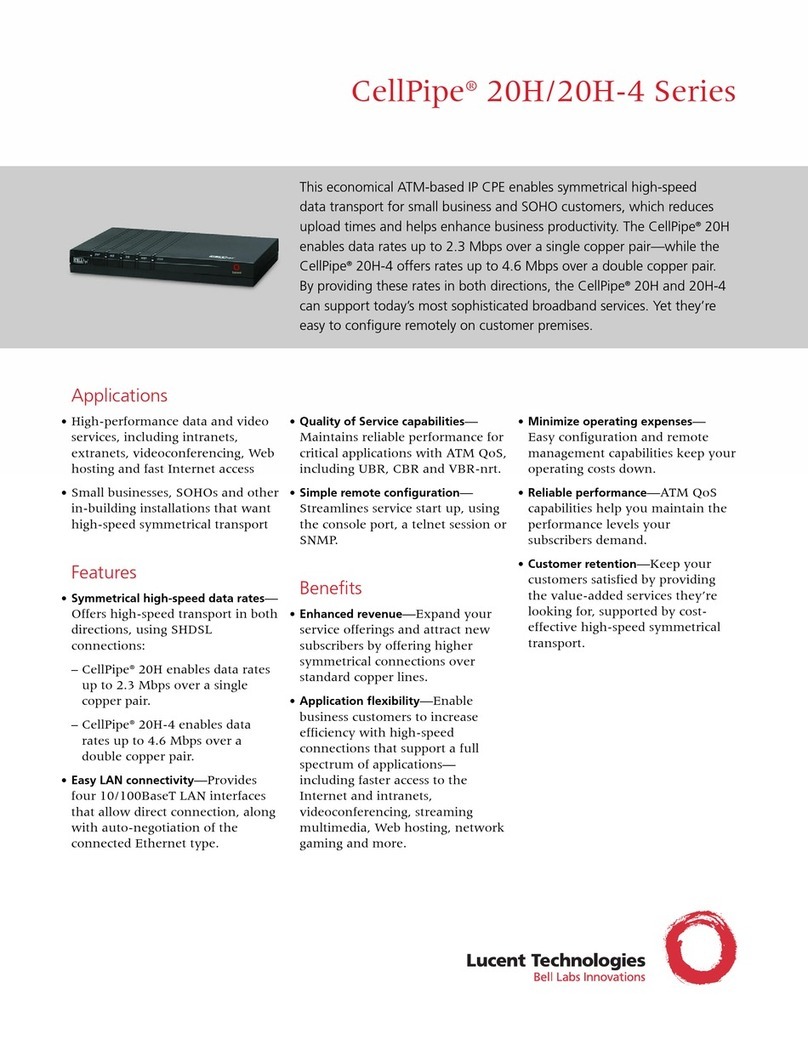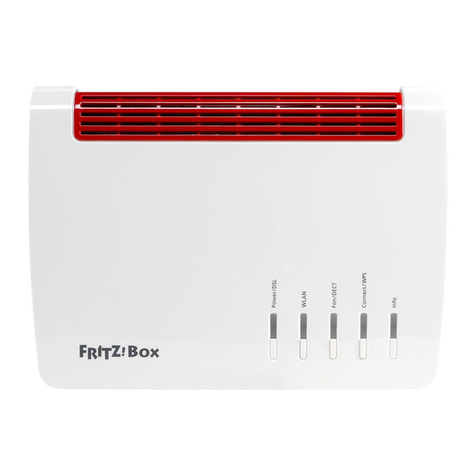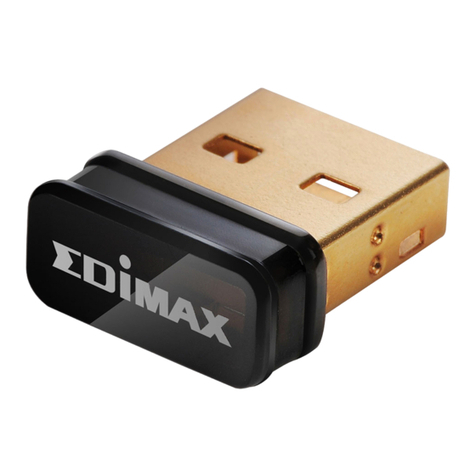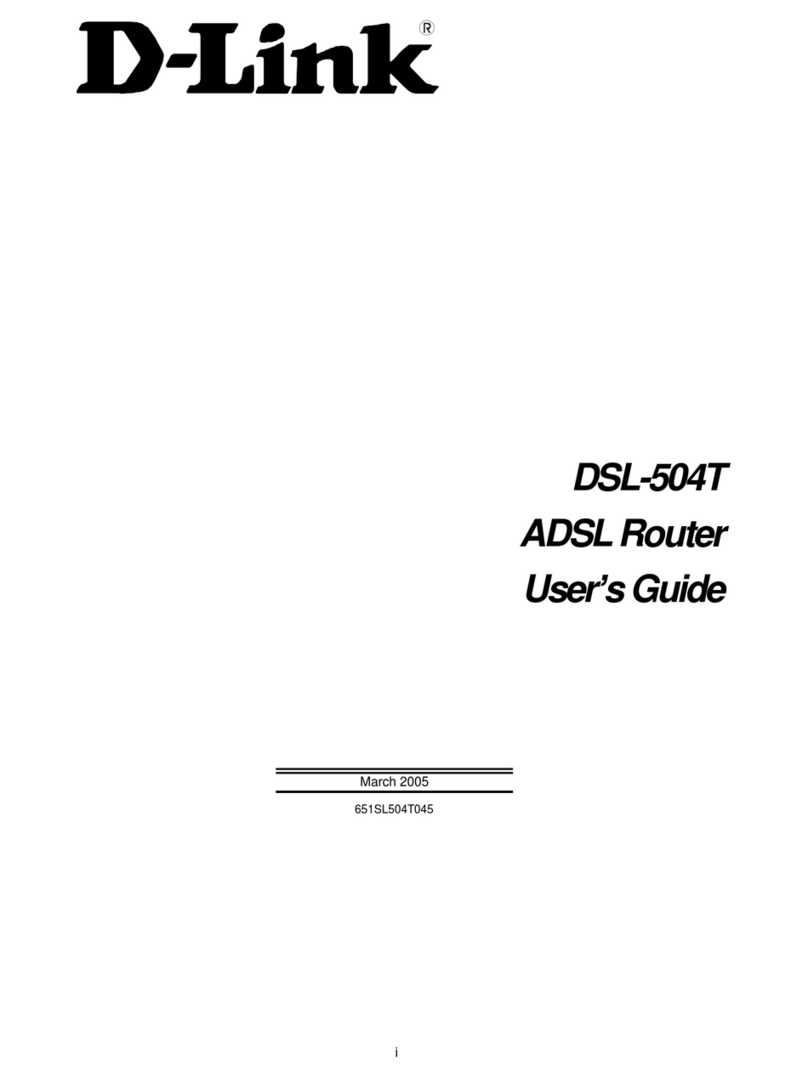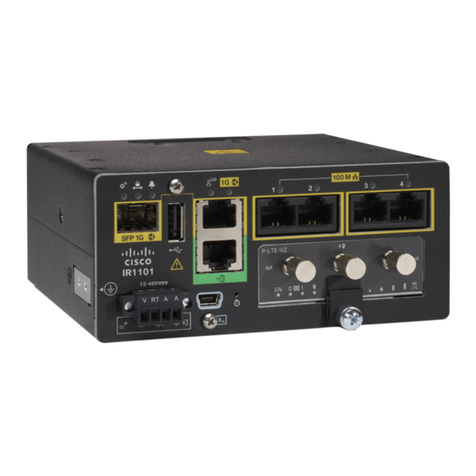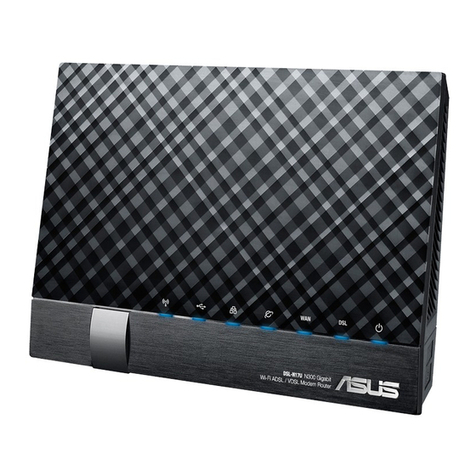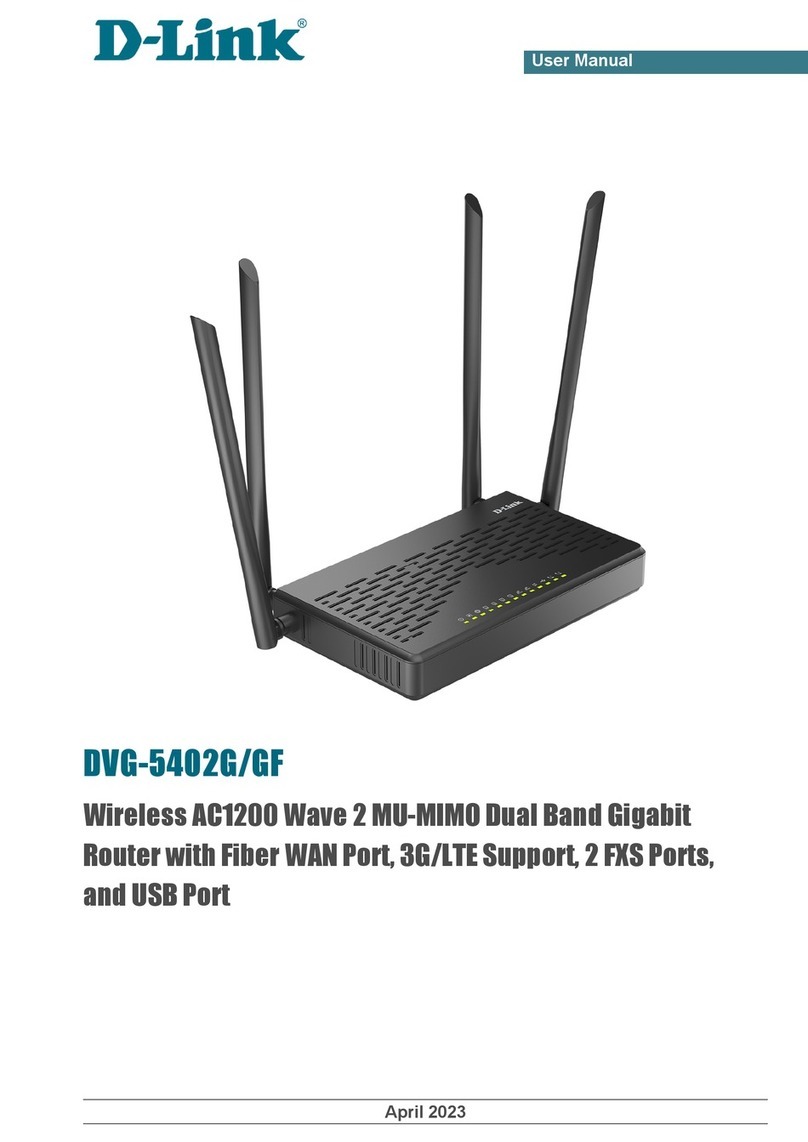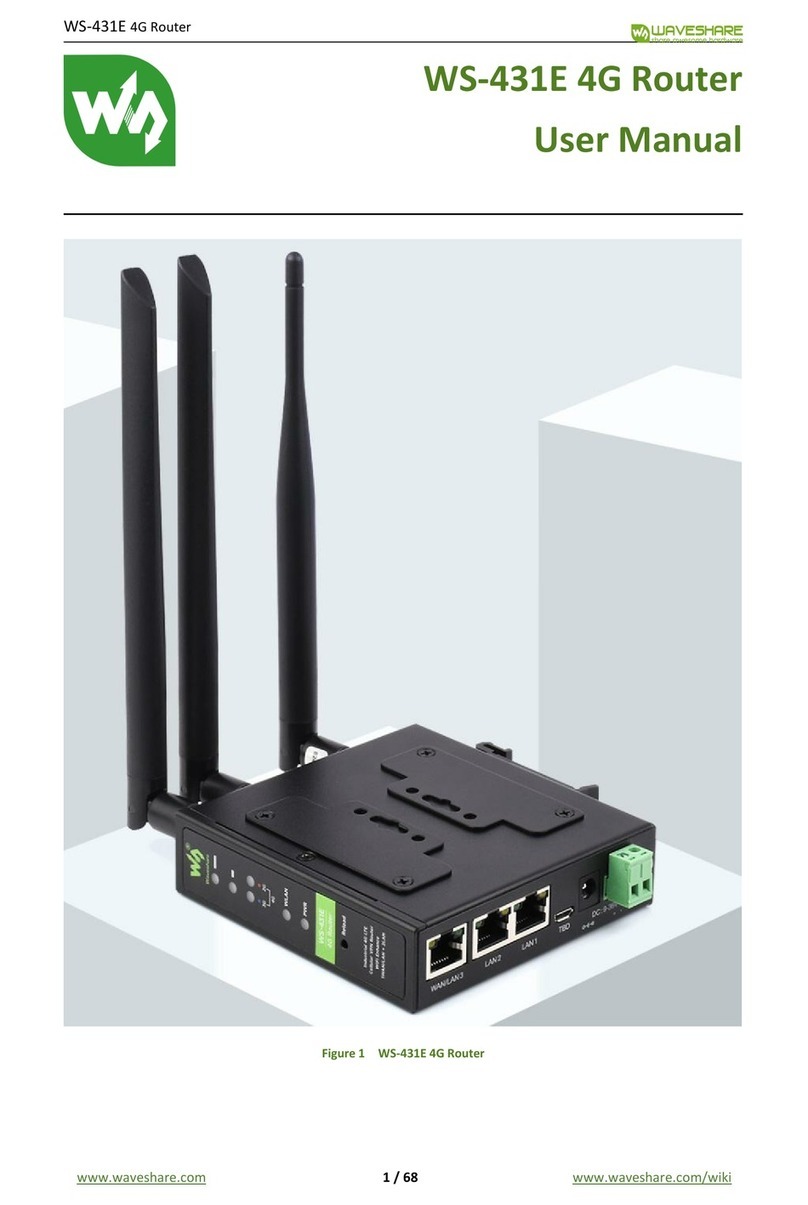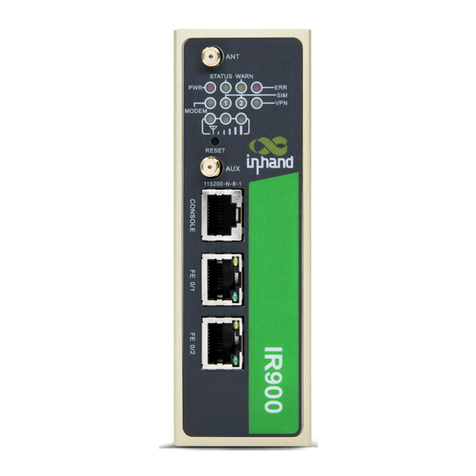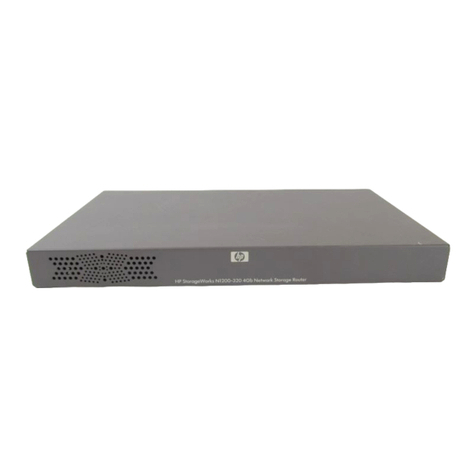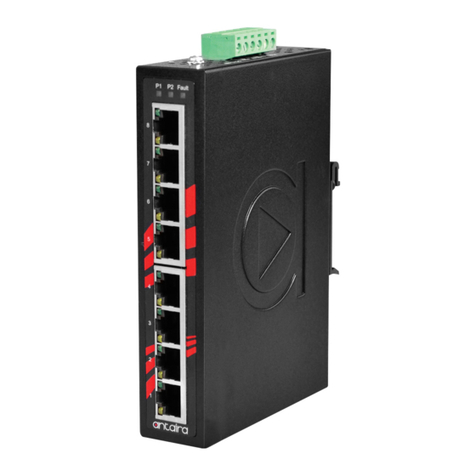Romantis Satellite Communications UHP-1000 User manual

SATELLITE ROUTER
UHP-1000
INSTALLATION AND OPERATION MANUAL
Document release 2.5
(for routers with SW version 2.5.X)
JANUARY 2012

UHP-1000 SATELLITE ROUTER
INSTALLATION AND OPERATION MANUAL, V. 2.5
(SW VERSION 2.5.X)
© ROMANTIS 2012 2 www.romantis.com
CONTENT
Acronyms and Abbreviations ..........................................................................................................6
Introduction.....................................................................................................................................8
Required level of qualification ..................................................................................................................8
Document version and applicability..........................................................................................................8
Title............................................................................................................................................................8
Compliance to Standards ..........................................................................................................................8
1. General description ..............................................................................................................9
1.1 System overview.......................................................................................................................9
1.1.1 Purpose.....................................................................................................................................9
1.1.2 Technical specifications ............................................................................................................9
1.1.3 Router composition ................................................................................................................11
1.1.4 Principles of operation............................................................................................................11
1.1.5 Measurement equipment, tools and accessories ..................................................................15
1.1.6 Labeling and sealing................................................................................................................15
1.1.7 Packaging and content............................................................................................................16
1.2 Description and principles of operation .................................................................................17
1.2.1 Overview.................................................................................................................................17
1.2.2 Power connector (DC IN) ........................................................................................................17
1.2.3 LAN interface connector.........................................................................................................17
1.2.4 USB CONSOLE .........................................................................................................................17
1.2.5 RESET button ..........................................................................................................................17
1.2.6 High-speed demodulator IF input (SCPC RX) ..........................................................................18
1.2.7 Burst demodulator IF input (TDMA RX)..................................................................................18
1.2.8 Modulator output (TX OUT) ...................................................................................................19
1.2.9 “ERROR” Indicator ..................................................................................................................19
1.2.10 “STATUS” Indicator............................................................................................................20
1.2.11 “LOCK” Indicator................................................................................................................20
1.2.12 “TDMA” Indicator ..............................................................................................................20
1.2.13 “SCPC” Indicator ................................................................................................................20
1.2.14 “TX” Indicator ....................................................................................................................20
2. Operations ..........................................................................................................................21
2.1 Operational limits ...................................................................................................................21
2.2 Preparation for use.................................................................................................................21
2.2.1 Unpacking ...............................................................................................................................21
2.2.2 Installation ..............................................................................................................................21
2.2.3 Connecting to external devices ..............................................................................................21
2.2.4 Powering on............................................................................................................................22
2.2.5 Local access to router via HTTP interface...............................................................................22

UHP-1000 SATELLITE ROUTER
INSTALLATION AND OPERATION MANUAL, V. 2.5
(SW VERSION 2.5.X)
© ROMANTIS 2012 3 www.romantis.com
2.2.6 HTTP interface ........................................................................................................................23
2.2.7 Local access via USB................................................................................................................23
2.2.8 Remote Telnet access .............................................................................................................23
2.2.9 Command interface and command syntax.............................................................................24
2.2.10 Error alerts.........................................................................................................................24
2.3 Interface management ...........................................................................................................25
2.4 Ethernet Interface...................................................................................................................26
2.4.1 ARP Protocol ...........................................................................................................................27
2.5 High-speed demodulator (SCPC Rx)........................................................................................28
2.5.1 Receiving signals from satellite...............................................................................................28
2.5.2 Searching the satellite carrier.................................................................................................29
2.5.3 SCPC demodulator control commands...................................................................................29
2.5.4 Additional commands.............................................................................................................30
2.5.5 Standard sequence for operation with demodulator ............................................................32
2.6 Burst demodulator..................................................................................................................33
2.7 Modulator...............................................................................................................................33
2.8 Controlled SCPC ......................................................................................................................36
2.9 Automatic Transmission Level Control (TLC) for SCPC ...........................................................38
2.10 IP traffic processing and routing.............................................................................................38
2.10.1 SVLAN overview.................................................................................................................38
2.10.2 IP-router ............................................................................................................................38
2.10.3 Router control commands.................................................................................................39
2.10.4 VLAN support.....................................................................................................................41
2.10.5 IP traffic screening.............................................................................................................42
2.10.6 Prioritization and DSCP......................................................................................................43
2.10.7 Multicast routing ...............................................................................................................43
2.10.8 L2 bridging .........................................................................................................................46
2.10.9 DHCP protocol ...................................................................................................................46
2.10.10 Compressing RTP packet headers .....................................................................................47
2.11 Traffic Shaper..........................................................................................................................47
2.12 TCP Acceleration.....................................................................................................................49
2.12.1 Configuration of TCP acceleration.....................................................................................50
2.13 Guidelines for actions in the event of faults during preparation ...........................................50
2.14 Satellite Pointing.....................................................................................................................50
2.14.1 Pointing with HTTP assistance...........................................................................................51
2.14.2 Pointing via management console ....................................................................................51
2.14.3 Pointing with analog reference signal ...............................................................................52
2.14.4 Auto tracking signals during normal operations ...............................................................53
2.15 Operations ..............................................................................................................................53
2.15.1 Modes of operations .........................................................................................................53
2.15.2 Switching between modes of operations..........................................................................53

UHP-1000 SATELLITE ROUTER
INSTALLATION AND OPERATION MANUAL, V. 2.5
(SW VERSION 2.5.X)
© ROMANTIS 2012 4 www.romantis.com
2.15.3 Exploitation........................................................................................................................54
2.15.4 Troubleshooting ................................................................................................................54
2.15.5 Configuration management ..............................................................................................55
2.15.6 Events (LOGGING)..............................................................................................................56
2.15.7 Limitations to access to the router....................................................................................56
2.15.8 SNMP protocol...................................................................................................................57
2.15.9 SNTP Protocol ....................................................................................................................57
2.15.10 Additional commands........................................................................................................58
2.15.11 Controlling router status ...................................................................................................58
2.15.12 Traffic diagnostics..............................................................................................................58
2.15.13 Powering off ......................................................................................................................59
2.15.14 Safety instructions for operations .....................................................................................59
2.15.15 Actions in case of fire ........................................................................................................59
3. Exploitation.........................................................................................................................60
3.1 Technical maintenance...........................................................................................................60
3.2 Router software......................................................................................................................60
3.2.1 Software boot management...................................................................................................60
3.2.2 Software update .....................................................................................................................62
4. Maintenance.......................................................................................................................63
4.1 Replacement of modules........................................................................................................63
4.1.1 Common recommendations...................................................................................................63
4.1.2 Safety instructions ..................................................................................................................63
4.2 Resetting to default settings...................................................................................................63
5. STORAGE, TRANSPORTATION AND DISPOSAL....................................................................64
FIGURES
Figure 1 Satellite communication terrestrial station layout .......................................................................12
Figure 2 Typical network diagram for SCPC dedicated channel..................................................................12
Figure 3 Typical network diagram for MCPC broadcasting.........................................................................13
Figure 4 Typical TDM/TDMA network diagram...........................................................................................14
Figure 5 Typical HUBLESS TDMA network diagram. ...................................................................................15
Figure 6 Standard labeling of satellite router .............................................................................................16
Figure 7 Packaging and content ..................................................................................................................16
Figure 8 UHP-1000 series modem –rear view............................................................................................17
Figure 9 Radio equipment power supply control........................................................................................18
Figure 10 Satellite Router UHP-1000 series front view...............................................................................19
Figure 11 Example of router’s connection in SCPC or TDM/TDMA terminal modes..................................22
Figure 12 Example of router's connection in TDM/TDMA MESH mode .....................................................22
Figure 13 Router statistics page..................................................................................................................23
Figure 14 Graphical example of the entire signal path via satellite and antenna system ..........................28
Figure 15 Satellite carrier search algorithm................................................................................................29
Figure 16 Routing layout with examples of commands..............................................................................39

UHP-1000 SATELLITE ROUTER
INSTALLATION AND OPERATION MANUAL, V. 2.5
(SW VERSION 2.5.X)
© ROMANTIS 2012 5 www.romantis.com
Figure 17 IP traffic screening.......................................................................................................................42
Figure 18 Prioritization of traffic on the modulator....................................................................................43
Figure 19 LAN multicast traffic handling algorithm ....................................................................................44
Figure 20 Satellite multicast traffic handling algorithm..............................................................................44
Figure 21 Principle of operation of Traffic Shaper......................................................................................47
Figure 22 Example of Traffic Shaper operation...........................................................................................48
Figure 23 HTTP Information about the quality of signal reception ............................................................51
Figure 24 Pinout of USB Console interface .................................................................................................52
Figure 25 Router reboot procedure ............................................................................................................61
Figure 26 Router resetting to default procedure........................................................................................63
TABLES
Table 1 UHP-1000 Satellite Router Specifications ........................................................................................9
Table 2 High-speed demodulator performance DVB-S mode.....................................................................10
Table 3 High-speed demodulator performance DVB-S2 QPSK mode (8 Msps) ..........................................10
Table 4 High-speed demodulator performance DVB-S2 8PSK mode (8 Msps)...........................................11
Table 5 High-speed demodulator performance DVB-S2 16APSK mode (8 Msps) ......................................11
Table 6 Burst demodulator performance (SlotLen=8) ................................................................................11
Table 7 Operational limits ...........................................................................................................................21
Table 8 Modulator parameters ...................................................................................................................33
Table 9 Supported FEC modes ....................................................................................................................34
Table 10 Troubleshooting guide..................................................................................................................54

UHP-1000 SATELLITE ROUTER
INSTALLATION AND OPERATION MANUAL, V. 2.5
(SW VERSION 2.5.X)
© ROMANTIS 2012 6 www.romantis.com
ACRONYMS AND ABBREVIATIONS
16APSK
16 Amplitude and Phase-shift keying or Asymmetric Phase-shift keying, (APSK), is a digital modulation
scheme that conveys data by changing, or modulating, both the amplitude and the phase of a reference
signal (the carrier wave).
8PSK
Phase-shift keying (PSK) is a digital modulation scheme that conveys data by changing, or modulating, the
phase of a reference signal (the carrier wave).
AGC
Automatic Gain Control
BCH
BCH code is a multilevel cyclic variable-length digital error-correcting code used for correcting multiple
random error patterns. BCH codes may also be used with multilevel phase-shift keying whenever the
number of levels is a prime number or a power of a prime number.
BUC
Block Up-Converter (BUC) is used in the transmission (uplink) of satellite signals. It converts a band (or
"block") of frequencies from a lower frequency to a higher frequency.
C/N
Carrier-to-noise ratio, often written as CNR or C/N, is the signal-to-noise ratio (SNR) of a modulated signal.
CRTP
Compressing IP/UDP/RTP Headers for Low-Speed Serial Links
DSCP
Differentiated Services Code Point (DSCP) is a 6-bit field in the header of IP packets for packet classification
purposes. DSCP replaces the outdated IP precedence, a 3-bit field in the Type of Service byte of the IP
header originally used to classify and prioritize types of traffic
DVB
Digital Video Broadcasting (DVB) is a suite of internationally accepted open standards for digital television.
Eb/No
Eb/N0 (the energy per bit to noise power spectral density ratio) is an important parameter in digital
communication or data transmission. It is a normalized signal-to-noise ratio (SNR) measure, also known as
the "SNR per bit". It is especially useful when comparing the bit error rate (BER) performance of different
digital modulation schemes without taking bandwidth into account.
EIRP
Effective Isotropically Radiated Power
ETSI
The European Telecommunications Standards Institute (ETSI) is an independent, non-profit,
standardization organization in the telecommunications industry (equipment makers and network
operators) in Europe, with worldwide projection.
FEC
In telecommunication and information theory, forward error correction (FEC) is a system of error control
for data transmission, whereby the sender adds redundant data to its messages, also known as an error-
correction code.
HTTP
Hypertext Transfer Protocol (HTTP) is an application-level protocol for distributed, collaborative,
hypermedia information systems.
HUB
Central Station of satellite network that is managing all the terminals and resources
HW
Hardware
ICMP
The Internet Control Message Protocol (ICMP) is used by networked devices to send error messages—
indicating, for instance, that a requested service is not available or that a host or router could not be
reached.
IESS
Intelsat Earth Station Standards
IGMP
The Internet Group Management Protocol (IGMP) is a communications protocol used by hosts and
adjacent routers on IP networks to establish multicast group memberships.
IP
IP is the usual abbreviation for Internet Protocol.
LDPC
Low-density parity-check (LDPC) code is a linear error correcting code, a method of transmitting a message
over a noisy transmission channel, and is constructed using a sparse bipartite graph.
LNB
Low-noise block converter is the receiving converter installed at satellite antenna.
MCPC
Multiple Channels per Carrier
NMS
Network Management System
Node Station
Terminal of satellite network which is able to receive information directly from other network terminals
ODU
Out-Door Unit
QPSK
Phase-shift keying (PSK) is a digital modulation scheme that conveys data by changing, or modulating, the
phase of a reference signal (the carrier wave).

UHP-1000 SATELLITE ROUTER
INSTALLATION AND OPERATION MANUAL, V. 2.5
(SW VERSION 2.5.X)
© ROMANTIS 2012 7 www.romantis.com
RSV
Reed–Solomon error correction is an error-correcting code that works by oversampling a polynomial
constructed from the data.
SCPC
Single Channel Per Carrier
SNMP
Simple Network Management Protocol
SNTP
Simple Network Time Protocol (SNTP) is a protocol and software implementation for synchronizing the
clocks of computer systems over packet-switched, variable-latency data networks.
SNR
Signal-to-noise ratio is an electrical engineering measurement defined as the ratio of a signal power to the
noise power corrupting the signal.
SR
Symbol Rate
SW
Software
TDM
Time Division Multiplexing
TDMA
Time Division Multiple Access
Telnet
Telecommunication Network (Telnet) is a network protocol used on the Internet or local area networks to
provide a bidirectional interactive communications facility. Typically, telnet provides access to a command-
line interface on a remote host via a virtual terminal connection.
Terminal
Earth Stations (usually VSAT) operated under management of network HUB
TFTP
Trivial File Transfer Protocol (TFTP) is a file transfer protocol, with the functionality of a very basic form of
File Transfer Protocol (FTP).
UDP
The User Datagram Protocol (UDP) is the set of network protocols used for the Internet. With UDP,
computer applications can send messages, in this case referred to as datagram, to other hosts on an
Internet Protocol (IP) network without requiring prior communications to set up special transmission
channels or data paths.
USB
USB (Universal Serial Bus) is a specification to establish communication between devices and a host
controller (usually personal computers).
VLAN
A virtual LAN, commonly known as a VLAN, is a group of hosts with a common set of requirements that
communicate as if they were attached to the same broadcast domain, regardless of their physical location.
VoIP
Voice over Internet Protocol (VoIP) is a general term for a family of transmission technologies for delivery
of voice communications over IP networks such as the Internet or other packet-switched networks.
VSAT
Very Small Aperture Terminal –satellite earth station with small-size antenna
X-modem
Simple file-transfer protocol

UHP-1000 SATELLITE ROUTER
INSTALLATION AND OPERATION MANUAL, V. 2.5
(SW VERSION 2.5.X)
© ROMANTIS 2012 8 www.romantis.com
INTRODUCTION
This document presents a general description of the UHP-1000 series satellite routers and is intended for
familiarization with the system capabilities and specifications. This manual describes all the key modes of the
router operations. Some of such modes of operations are described in the separate manuals –attachments to this
document.
Required level of qualification
This manual is intended for engineering personnel operating the UHP -based satellite networks. The engineers
have to have a basic radio engineering education, experience in administration of data networks.
Document version and applicability
UHP-1000 Satellite router is a basic element of network architecture and can be used at any level of network
hierarchy. The functionality of the router and its modes of operations are determined by the activated software
features.
This document version is 2.5 and it’s applicable for all UHP-1000 series satellite routers with SW release 2.5.X and
serial numbers above 3501. When ordering this document please specify its article: RD.IOM1.EN2.5.
Title
The content of this document is the intellectual property of Romantis GmbH (referred to below as Romantis).
Copying or quoting this description as a whole or of any part of it without Romantis written permission is
prohibited.
Compliance to Standards
Romantis declares that all manufactured UHP-1000 series satellite routers comply with international industrial
standards and requirements, namely to:
ETSI EN 301 428 –Earth stations and satellite communication systems.
ETSI EN 301 489-1 & -12 - Electromagnetic compatibility and RF spectrum.
EN 60 950-1 –Telecommunication devices safety.
Requirements to satellite communication earth stations operating in the Eutelsat system (type approval).
Requirements to satellite communication land stations operating in the Intelsat system (IESS-308).

UHP-1000 SATELLITE ROUTER
INSTALLATION AND OPERATION MANUAL, V. 2.5
(SW VERSION 2.5.X)
© ROMANTIS 2012 9 www.romantis.com
1. GENERAL DESCRIPTION
1.1 System overview
1.1.1 Purpose
UHP satellite routers are essentially a universal solution for geographically distributed VSAT-class satellite
communication networks. UHP routers can be used to organize simple point-to-point channels, “star”- and
“mesh”-topology networks with several hierarchy levels and bandwidth-on-demand capabilities.
UHP VSAT platform is based on many innovation technologies. It was developed using long-term experience in
satellite service provisioning. Nowadays electronics achievements made it possible to make VSAT platform
compact and assure its efficiency and reach functionality.
1.1.2 Technical specifications
Table 1 UHP-1000 Satellite Router Specifications
PARAMETER
SPECIFICATION
MODULATOR
Operation mode
Continuous (SCPC, MCPC) DVB-S1, DVB-S2 CCM, DVB-S2 Short and DVB-S2
Long-frame
Burst (TDMA)
Modulation
SCPC: QPSK, 8PSK (DVB-S2), 16APSK (with DVB-S2)
TDMA: QPSK, 8PSK (future SW deployment)
Transmission data rate
DVB-S1: 250-34000 kSps (240-54000 kbps)
DVB-S2: 550-32000 kSps (530-86000 kbps)
TDMA: 100-4000 kSps (130-6000 kbps)
Step –1 kSps
Forward Error Coding
DVB-S1 (Viterbi+RS) 1/2 , 2/3, 3/4, 5/6, 7/8;
DVB-S2 (LDPC&BCH ) 1/3, 2/5, 1/2, 3/5, 2/3, 3/4, 4/5, 5/6, 8/9, 9/10
TDMA (LDPC) 2/3, 5/6
Output spectrum
In compliance with IESS-308
Auto adjustment
Power Level
HIGH-SPEED DEMODULATOR
Operation mode
Continuous (SCPC, MCPC) DVB-S and DVB-S2
Receive datarate
Up to 86 Mbit/s
Modulation
QPSK (DVB-S/S2), 8PSK (DVB-S2), 16APSK (DVB-S2)
BURST DEMODULATOR
Operation mode
Burst (TDMA)
Receive datarate
Up to 6 Mbps (LDPC)
Modulation
QPSK
Forward Error Coding
FEC 2/3, 5/6 LDPC
INTERFACES
LAN (User Interface)
Ethernet 10/100Base-T, RJ-45
Control console
USB
IF reception (SCPC Rx and TDMA Rx)
950-2050 MHz
LNB converter power supply 13.5 VDC / 18 V (0.75A)
Reference frequency 10 MHz / +5 dBm (TDMA Rx)
IF transmission (Tx OUT)
950 -1550 MHz1
Output power -30… -5 dBm2with 0.1 dBm steps
Reference frequency 10 MHz / +5 dBm
1
Up to 1700 MHz with no guaranty
2
Up to -36… -1 dBm with no guaranty

UHP-1000 SATELLITE ROUTER
INSTALLATION AND OPERATION MANUAL, V. 2.5
(SW VERSION 2.5.X)
© ROMANTIS 2012 10 www.romantis.com
Table 1 UHP-1000 Satellite Router Specifications
PARAMETER
SPECIFICATION
Transmitter power supply 24 VDC (2A), with power-off capability
ROUTER
Routing
Static routing and route announcement (RIP2 protocol)
IP-address support on the device
Up to 1000
Efficiency
96 Mbps (limited by LAN) or 28,000 pps
Up to 1000 routes in the Table without losses in routing efficiency
Support
IP Multicast / DSCP / VLAN (+port tagging) / CRTP / IGMP
Prioritization levels
3, adaptive
Control and monitoring
WWW, Telnet, SNMP-V2C
SW upgrade
TFTP, X-modem (3 banks for various versions)
HUB MODE TDM/TDMA
Network size
Up to 252 terminals per each return channel (Inroute)
up to 31 Inroutes per Network
Topologies
Point-to-point, Point-to-multipoint, TDM/TDMA Mesh, Full Mesh TDMA
ENVIRONMENT (IDU)
Supply voltage
~ 100-240 VAC or 24 VDC
Power consumption, W
<10W router, up to 80W with RF (Outdoor) equipment
Temperature range
0…+400 C
Maximum humidity
Up to 90% @ 250С
Overall dimensions, mm
145 х 30 х 155 (router); 165 х 75 х 45 (power supply unit)
Brutto weight, kg, max
0,53 (router); 0,85 (power supply unit)
Table 2 High-speed demodulator performance DVB-S mode
FEC (BER<=10E-8)
1/2
2/3
3/4
5/6
7/8
(C+N)/N*
5.0
6.1
7.0
7.8
8.5
C/N
3.4
4.9
6.0
7.0
7.8
Eb/No,
3.7
4.0
4.6
5.1
5.8
Table 3 High-speed demodulator performance DVB-S2 QPSK mode (8 Msps)
FEC
(BER<=10E-8)
DVB-S2 QPSK CCM, ACM-LONG
DVB-S2 QPSK ACM-SHORT
(C+N)/N*
C/N
Eb/No,
(C+N)/N*
C/N
Eb/No
1/3
-
-
-
2,6
-0,86
0,9
2/5
-
-
-
3,0
-0,02
1.0
1/2
3,5
0,9
1,0
3,5
0,9
1,0
3/5
4,4
2,4
1,6
4,5
2,6
1,8
2/3
4,9
3,2
2,0
5,0
3,3
2,1
3/4
5,5
4,1
2,4
5,6
4.2
2,5
4/5
6,1
4,8
2,8
6,2
5,0
3,0
5/6
6,3
5,1
2,9
6,6
5,5
3,3
8/9
7,2
6,3
3,8
7,3
6,4
3,9
9/10
7,4
6,5
4,0
-
-
-

UHP-1000 SATELLITE ROUTER
INSTALLATION AND OPERATION MANUAL, V. 2.5
(SW VERSION 2.5.X)
© ROMANTIS 2012 11 www.romantis.com
Table 4 High-speed demodulator performance DVB-S2 8PSK mode (8 Msps)
FEC
(BER<=10E-8)
DVB-S2 8PSK CCM, ACM-LONG
DVB-S2 8PSK ACM-SHORT
(C+N)/N*
C/N
Eb/No,
(C+N)/N*
C/N
Eb/No
3/5
6,7
5,7
3,2
8,3
7,6
5,1
2/3
7,7
6,9
4,0
8,2
7,5
4,5
3/4
8,8
8,2
4,7
9,2
8,6
5,1
5/6
10,2
9,7
5,8
10,3
9,9
5,9
8/9
11,5
11,1
6,9
11,6
11,3
7,1
9/10
11,6
11,3
7,1
-
-
-
Table 5 High-speed demodulator performance DVB-S2 16APSK mode (8 Msps)
FEC
(BER<=10E-8)
DVB-S2 16APSK CCM, ACM-LONG
DVB-S2 16APSK ACM-SHORT
(C+N)/N*
C/N
Eb/No,
(C+N)/N*
C/N
Eb/No
2/3
10,4
10,0
5,8
10,7
10,3
6,1
3/4
11,1
10,8
6,0
11,3
11,0
6,2
4/5
11,7
11,4
6,4
12,1
11,8
6,8
5/6
12,2
11,9
6,7
12,5
12,2
7,1
8/9
13,5
13,3
7,8
13,6
13,4
7,9
9/10
13,7
13,5
8,0
-
-
-
Table 6 Burst demodulator performance (SlotLen=8)
FEC (BER<=10E-7)
2/3
5/6
(C+N)/N*
6.5
7.7
C/N
5.4
6.9
Eb/No
4.2
4.7
1.1.3 Router composition
UHP-1000 router consists of:
1. High-speed SCPC/MCPC demodulator
2. Burst demodulator
3. Universal modulator
4. Router
5. Controller
6. PSU - Power supply
PSU is an external device and provides a satellite router with power of 24VDC. UHP-1000 satellite router can be
powered from any external DC power circuit with 24VDC and sufficient current.
1.1.4 Principles of operation
UHP-1000 Satellite Router is an in-door part of Satellite Earth Station. The outdoor part of the Earth station
consists of:
Satellite antenna;
Block Up-Converter (BUC);

UHP-1000 SATELLITE ROUTER
INSTALLATION AND OPERATION MANUAL, V. 2.5
(SW VERSION 2.5.X)
© ROMANTIS 2012 12 www.romantis.com
Low-noise converter (LNB);
Pair of coaxial cables connecting Outdoor and Indoor units.
Figure 1 Satellite communication terrestrial station layout
HUB and Terminal layout is similar and can differ in the size of the antennas and RF equipment used, as well as by
the satellite router type.
UHP-1000 routers can operate in the different modes depending on activated mode of operations:
SCPC –a dedicated channel mode when Terminals interact with each other or with a HUB via fixed
dedicated satellite bandwidth with a guaranteed physical level capacity (see Figure 2). Each terminal
transmits one dedicated channel that will be received by opposite terminal. This mode is appropriate
for channels with high capacity and steady high traffic. Hub is not required in this mode.
Figure 2 Typical network diagram for SCPC dedicated channel.
Broadcasting network with dedicated MCPC channel. There two types of Earth Stations in such
networks:
oUplink station that is continuously broadcasting MCPC carrier that containing information for
a specific network station or for a group of such stations. When necessary Uplink station may
control the quality of its transmission by receiving its carrier back from the satellite.
oUnlimited number of stations that are receiving the carrier from the satellite and route any
traffic intended for this destination to its LAN port. Such stations are, normally, receive-only
without any transmission path.
Parabolic antenna
IF coaxial cable (receive)
UHP satellite router
LAN User interface
(10/100 BaseT)
220 VAC
or
24 VDC
Power supply
Block-Up-Converter
(BUC)
IF coaxial cable (transmit)
LNB converter
Satellite
2
UHP Terminal
SCPC
1
2
High-speed
Demodulator
Router
UHP Terminal
SCPC
1
UHP-1000
Burst
Demodulator
Universal
Modulator
Net 1
High-speed
Demodulator
Router
UHP-1000
Burst
Demodulator
Universal
Modulator
Net 2

UHP-1000 SATELLITE ROUTER
INSTALLATION AND OPERATION MANUAL, V. 2.5
(SW VERSION 2.5.X)
© ROMANTIS 2012 13 www.romantis.com
Figure 3 Typical network diagram for MCPC broadcasting.
TDM/TDMA network –a network mode with dynamic redistribution of satellite network capacity
consisting of Hub and Terminals. The TDM/TDMA network consists of:
oHub is a central station of the network that is managing operations of all Network Terminals
and distributing the bandwidth accordingly to actual traffic load and predefined QoS. Hub is
also acting as a gateway, concentrating and routing traffic of all Network Terminals to/from
external networks. Hub consists of one or several UHP-1000 routers depending on network
size. (See Figure 4)
Hub constantly broadcasts common MCPC carrier - Outroute (1) dedicated to all network
Terminals. Hub uses Time Division Multiplexing (TDM) to deliver data to specific terminal or
to some group of terminals. Such data consists of user traffic and network management
commands.
Hub receives its Outroute channel from the satellite for calculation of the Time To Satellite
(TTS) delay that is required for network synchronization.
oTerminal - is network access equipment that interacts with the Hub in Hub/Spoke (Star)
topology. Terminals receive the MCPC Outroute (1) broadcasted from the Hub and respond
to the Hub via Time Divided Multiple Access (TDMA) carrier - Inroute (2). One or several
TDMA Inroutes are shared between groups of Terminals. Each Terminal transmits its
information as packets (burst) to individually-assigned time-slot determined by the Hub.
oMesh Terminal –an advanced mode of operation of basic Terminal that allows
simultaneously receiving information from the Hub and other remotes. Mesh Terminal is
also based on UHP-1000 router, but with enabled burst demodulator (which is software
activated option of any UHP-1000 router). In such advanced mode Terminals may exchange
information in-between each other in one-satellite hop without any transit via Hub. Mesh
Terminals allow creating network of any topology e.g. "tree", "star of stars", ”Mesh”, etc.
Satellite
UHP Terminal
MCPC
1
High-speed
demodulator
Router
UHP-1000
Burst
demodulator
Universal
Modulator
UHP Terminal
SCPC
1
Users
Users
1
High-speed
demodulator
Router
UHP Uplink
MCPC
1
UHP-1000
Burst
demodulator
Universal
modulator
Data source
High-speed
demodulator
Router
UHP-1000
Burst
demodulator
Universal
Modulator

UHP-1000 SATELLITE ROUTER
INSTALLATION AND OPERATION MANUAL, V. 2.5
(SW VERSION 2.5.X)
© ROMANTIS 2012 14 www.romantis.com
Figure 4 Typical TDM/TDMA network diagram.
HUBLESS TDMA Network (see Figure 5) consists of equal Earth Stations (Hubless Stations) that
interact with each other through a common TDMA channel (1). This channel is used by all Hubless
Stations to send and receive information with dynamic reallocation of the resource on demand.
Theoretically, all network resources can be concentrated just for transmission or receive of one
particular Network Station, if no other traffic in the network.
One of the Network Stations acts as a Master and takes over the functions of dynamic network
resource allocation between other Stations. To ensure Mesh interactions between all the Stations a
satellite link budget should be designed in such a way that all Stations properly receive each other.
The minimum criterion is that all Network Stations properly receive the bursts of Master Station and
vice versa. However, the network designed under such minimal criteria will behave as Star-topology
system with a center at the Master Station.
High-speed demodulator in Hubless TDMA network is not in use and can be used to receive some
additional traffic via MCPC carrier, such as broadband Internet. It could be a carrier from the same or
from another satellite.
UHP Hub
TDM/TDMA HUB
Satellite
2
1
1
2
External
networks
UHP-1000
UHP Terminal
TDM/TDMA STAR
UHP Mesh Terminal
TDM/TDMA MESH
2
UHP-1000
1
High-speed
demodulator
Router
Burst
demodulator
Universal
modulator
High-speed
demodulator
Router
Burst
demodulator
Universal
modulator
2
UHP Mesh Terminal
TDM/TDMA MESH
1
Users
UHP-1000
High-speed
demodulator
Router
Burst
demodulator
Universal
modulator
UHP-1000
High-speed
demodulator
Router
Burst
demodulator
Universal
modulator
Users
Users

UHP-1000 SATELLITE ROUTER
INSTALLATION AND OPERATION MANUAL, V. 2.5
(SW VERSION 2.5.X)
© ROMANTIS 2012 15 www.romantis.com
Figure 5 Typical HUBLESS TDMA network diagram.
1.1.5 Measurement equipment, tools and accessories
Standard computer (notebook) is required to configure and monitor status of -1000 satellite router. The computer
must be equipped with a LAN interface and USB, and also have the following software installed:
Internet browser (WEB browser)
Telnet Client
The Terminal (e.g.: Hyperterminal, included in the OS Windows) (optional)
The router can be accessed via LAN or USB ports. Standard USB AM/BM cable (not supplied) is required for
connection to USB “Console” port of the satellite router.
Connection of a computer to the router via LAN interface is implemented through the Ethernet switch or hub via a
standard network cable with RJ-45 connectors (not supplied).
1.1.6 Labeling and sealing
The product is marked with the unique Serial Number, as well as Part Number on the bottom of the router case.
The warranty seals are located on the bottom of the product, at the junction of the two parts of the case. Product
warranty will automatically void if such labels have been removed, modified or damaged.
UHP Master Station
HUBLESS TDMA (Master)
Satellite
1
UHP-1000
UHP Slave Station
HUBLESS TDMA
UHP-1000
High-speed
Demodulator
Router
Burst
Demodulator
Universal
modulator
High-speed
Demodulator
Router
Burst
Demodulator
Universal
modulator
Users
1
UHP-1000
UHP Slave Station
HUBLESS TDMA
High-speed
Demodulator
Router
Burst
Demodulator
Universal
modulator
Users
UHP Slave Station
HUBLESS TDMA
High-speed
Demodulator
Burst
Demodulator
Universal
modulator
Router
UHP-1000
1
1
Users
Users

UHP-1000 SATELLITE ROUTER
INSTALLATION AND OPERATION MANUAL, V. 2.5
(SW VERSION 2.5.X)
© ROMANTIS 2012 16 www.romantis.com
Figure 6 Standard labeling of satellite router
1.1.7 Packaging and content
Satellite router comes in a 335x205x55 mm box with gross weight 1,300 grams. It is recommended to keep original
packaging throughout the entire lifetime. Conservation, storage and transportation of the terminal must be in
original packaging.
Standard UHP-1000 package includes:
1. Satellite router UHP-1000
2. PSU
3. AC Power Cord
4. Documentation on CD-ROM
5. Stickers with description of the indicators
Figure 7 Packaging and content

UHP-1000 SATELLITE ROUTER
INSTALLATION AND OPERATION MANUAL, V. 2.5
(SW VERSION 2.5.X)
© ROMANTIS 2012 17 www.romantis.com
1.2 Description and principles of operation
1.2.1 Overview
Each module of -1000 satellite router has its own interface to external devices. All the interfaces are
located on the rear panel of the device. The indicators are located on the front panel. LAN Indicators are
integrated into the LAN connector on the back of the router.
Figure 8 UHP-1000 series modem –rear view
1.2.2 Power connector (DC IN)
UHP-1000 router is powered with 24 VDC. AC Power supply adaptor is supplied with the set. The router can be
powered from a DC power source (batteries, DC-DC converter), but the specific power supply mode should be
agreed upon with the Manufacturer. Power supply connector features dimensions 5.5 / 2.1 mm (outer and inner
diameters). Positive terminal of the source is on the central contact.
1.2.3 LAN interface connector
LAN connector is purposed for connecting to Ethernet switch using a straight cable. Bit rate 10 or 100 and duplex
mode are software selectable. Indicators built into the connector mean the following: left one (green) –
connection (Link) and data transmission (Activity), the right one –yellow) –activation of half-duplex mode.
1.2.4 USB CONSOLE
The console port provides local control of the device.
1.2.5 RESET button
Router reset is provided using this button. Also, using special combination of pressings this button allows router
reset to factory settings.

UHP-1000 SATELLITE ROUTER
INSTALLATION AND OPERATION MANUAL, V. 2.5
(SW VERSION 2.5.X)
© ROMANTIS 2012 18 www.romantis.com
Figure 9 Radio equipment power supply control.
1.2.6 High-speed demodulator IF input (SCPC RX)
SCPC-RX is one of the two signal inputs to receive signals from the satellite (LNB). This input is designed to receive
continuous (SCPC/MCPC) carriers in DVB-S and DVB-S2 formats from the satellite. The input, on the router side,
can be fed with 13 or 18 V power supply. Whether power source in on or off, the input can withstand external
voltage up to 50 V (power supply circuit is provided with a diode). Short circuiting is not welcome since it creates
high load on the device. Power supply circuit is protected with a thermal fuse operating in case of short circuiting.
After short circuiting is removed it may be required to disconnect load from Rx inputs for several seconds so as to
allow the fuse to return to its initial state.
Cable length and cable quality (losses level) can affect the quality and possibility of receiving signals.
1.2.7 Burst demodulator IF input (TDMA RX)
TDMA-RX is the second input for the signal from the satellite (LNB). This input is designed to receive bursts (TDMA)
in UHP proprietary format. The input can also provide, from the router side, supply voltage 13 or 18 V, similar
voltages being simultaneously fed to both inputs. The router can feed this input with a reference signal for using
PLL LNB requiring external reference signal. When reference signal is switched off the router will not distort
reference signal arriving at the input from outside. The rest conditions are similar to those across SCPC RX.
THE TOTAL CURRENT CONSUMED BY EXTERNAL EQUIPMENT THROUGH BOTH RX INPUTS SHOULD NOT BE IN EXCESS OF
750 MA. NORMALLY,CURRENT CONSUMPTION BY DRO LNB -150 MА, PLL LNB -500 MА.
Input 24V
Self-recovery fuse
10 MHz
DC-DC
Tx Out
TDMA Rx
SCPC Rx
18V
13V
demod lnb power on|off
demod polarization a|b hor|ver
tdma reference on|off
modulator power on|off
modulator reference on|off

UHP-1000 SATELLITE ROUTER
INSTALLATION AND OPERATION MANUAL, V. 2.5
(SW VERSION 2.5.X)
© ROMANTIS 2012 19 www.romantis.com
Figure 10 Satellite Router UHP-1000 series front view
1.2.8 Modulator output (TX OUT)
TX OUT OUTPUT CAN FEATURE 24 VDC WITH A HIGH SHORT-CIRCUIT CURRENT.SHORT CIRCUITING CAN CAUSE
SPARKLE SPREAD AND BURNS.THIS VOLTAGE CAN DAMAGE MEASUREMENT EQUIPMENT IF IT IS NOT PROTECTED AT ITS
INPUTS.SUPPLYING EXTERNAL VOLTAGE TO THIS CONNECTOR IS OBJECTIONABLE AND SUPPLYING MORE THAN 24 VIS
PROHIBITED.
UHP-1000 modulator is compatible with most satellite transmitters/converters (BUC). Those incompatible are only
transmitters that require to explicit “TX On” FSK command but such transmitters are extremely rare and are not
widely employed.
Modulator is connected directly to the transmitter IF connector. Router provides 24 VDC power supply to the
transmitter and 10 MHz reference signal. UHP-1000 is not provided with a separate protection on the transmitter
power supply circuitry. Use is made of current protection for the power supply adapter. In case of a short circuit
the router is de-energized and then gets restarted. If power supply is switched on in the configuration, restarts
continue at 5 seconds interval until short circuiting is removed.
ANY OPERATIONS WITH IF TX CABLE SHOULD BE PERFORMED WITH 24 VSUPPLY VOLTAGE TURNED OFF.OTHERWISE,
SELF-INDUCTION ACROSS A LONG CABLE CAN DAMAGE THE TRANSMITTER AND/OR ROUTER.
1.2.9 “ERROR” Indicator
“ERROR” red indicator makes it possible to infer about problems in the router functioning. The type of the
generated problem can be judged by the number of indicator flashes:
1 –Demodulator cannot receive MCPC channel from the Hub (other Terminal). Please check AGC value in the
demodulator statistics to determine whether there is a signal from antenna (see description of reception
problems) to separate LNB and cable faults.
2 –Router cannot receive TDMA configuration from the HUB (TDM/TDMA network mode). The reason can be in
the non-availability of receive channel from the HUB, CRC errors during reception, wrong configuration of the
Terminal.
3 - Router cannot calculate time shift with respect to the HUB. The reason can be in the non-availability of
reception or a large number of CRC errors during reception.
4 –HUB cannot receive signal from this terminal. Please check transmit signal level of the terminal, whether power
supply and the reference signal for the transmitter are switched on (or off if required), whether DTTS or
geographical coordinates are set correctly in the TDMA settings.
Continuous signal means that the router has hardware or configuration errors, which can be viewed with the
command "show errors" (see paragraph 2.2.10)

UHP-1000 SATELLITE ROUTER
INSTALLATION AND OPERATION MANUAL, V. 2.5
(SW VERSION 2.5.X)
© ROMANTIS 2012 20 www.romantis.com
1.2.10 “STATUS” Indicator
“STATUS” green indicator indicates the router operation mode. This indicator is always flashing. If it does not flash
it means that the router is not functioning (please check power supply). Slow flashing (once every second) means
router normal operation. Faster flashing (3 times every second) means that a Telnet remote control session is
established (in this case USB console does not operate until session is over).
Fast (6 times every second), simultaneous flashing of “ERROR” and “STATUS” indicators means that the router is
functioning with the factory default configuration. Access to the router in this mode is possible either via USB of
via IP-address 192.168.222.222 (mask 255.255.255.248 or /29).
1.2.11 “LOCK” Indicator
“LOCK” green indicator indicates whether the router receives a channel from the central station. If there are CRC
errors during reception of information from the channel (e.g. with weak signal from the antenna), the indicator
extinguishes for a fraction of a second at every error. If there are too many errors the indicator may not glow at all
in spite of the fact that the router receives the channel (in this case please check the router demodulator
statistics).
1.2.12 “TDMA” Indicator
“TDMA” yellow indicator flashes every time a data placket is received via TDMA RX interface.
1.2.13 “SCPC” Indicator
“SCPC” yellow indicator flashes every time a data placket is received via SCPC RX interface.
1.2.14 “TX” Indicator
“TX” yellow indicator flashes every time a data placket is transmitted in the MCPC mode, and also a blank packet –
in the TDMA mode (if no data is available for transmission).
Other manuals for UHP-1000
1
Table of contents
Other Romantis Satellite Communications Network Router manuals

